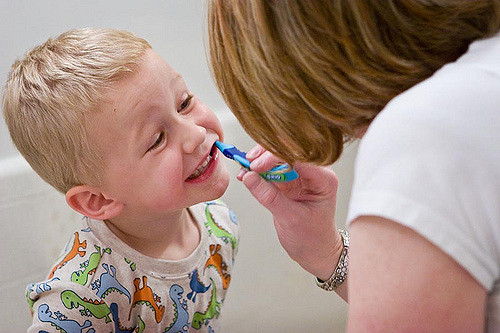
Routines are great, especially for babies and toddlers. It gives them a sense of control and safety, and also allows you to get more done in a shorter amount of time! Here are a few tips on establishing your routines – what to include, how to get started, and how to keep it up!
Step 1: Figure out what you want in your routine. If you are building your morning routine, you’ll want to include teeth brushing, breakfast, and getting dressed, but you may also need to include caring for pets, running a load of dishes, or distributing medications. Make a list of what you need to get done every morning, then move to step two!
Step 2: Map out your to-do list according to what chores need to be done where. For a morning routine, you’ll want going potty and getting dressed first if your bedrooms are upstairs, and then eating and packing your diaper bag downstairs in the kitchen. Sometimes doing a walk-through will help you remember anything you missed while making your initial list in step 1.
Step 3: Write it down. For toddlers and preschoolers, picture charts like Schkidules can be particularly helpful. You can also laminate pictures and attach them to a strip of paper or a board. When each one is completed, your child can either remove it or put sticker next to it. This helps keep kids on track and engaged, and if they get distracted or say, “Oh, I need one more book!”, you can say, “See here? We already did that.”
Having special songs for specific parts of your day are also a great way to engage your little helpers. Search Youtube for songs on cleaning up, teeth brushing, and even making up beds.
Children love clarity and consistency and an approach like this helps answer questions about the exact limits, what to expect, and what comes next. Implementing routines will help cut down on tantrums and power struggles. They can also ease tough transitions like drop-offs. A consistent routine of 2 kisses, a fist bump, and see you later alligator! at pre-school drop off can be comforting to an otherwise emotionally trying transition.
Step 4: To get the timing right, start at the time each routine needs to be completed (say, 7:30 a.m. for the time you have to be out the door for work or 7:30 p.m. bedtime,) and work backward from there. Be generous to start, but as you and your children get used to each routine, it will take less and less time.
For infants, the recurring routine of eat, awake, sleep is repeated every 2 1/2 to 4 hours, depending on age, is great. This will help you know what baby may need when he is unhappy. If he is crying at 8 a.m., but you just had your full 7 a.m. feed, you can check hungry off your list and then move on. Boredom? Over stimulated? Tired? See Tracy Hogg’s Secrets of the Baby Whisperer for more information.
Step 5. Stick to it! Good luck!